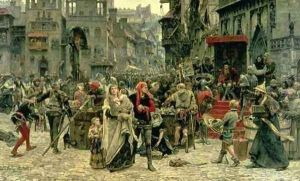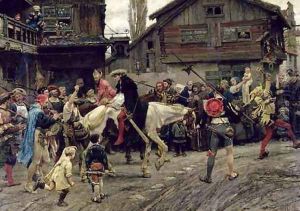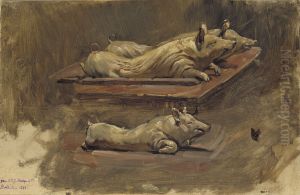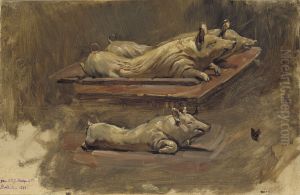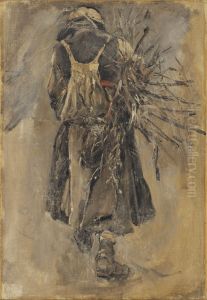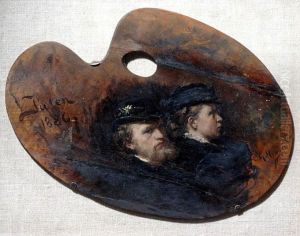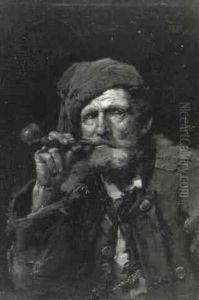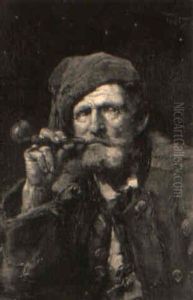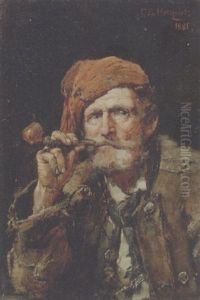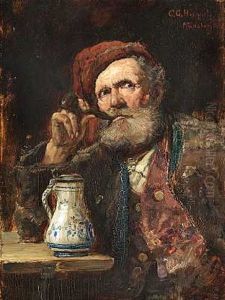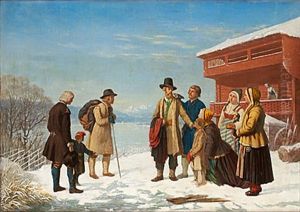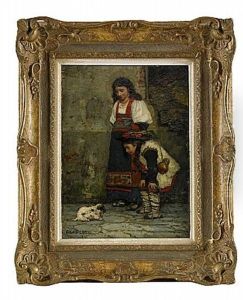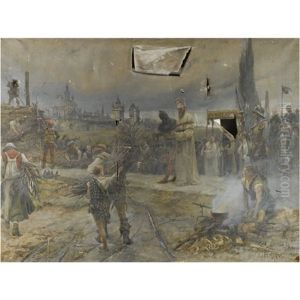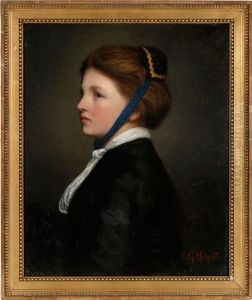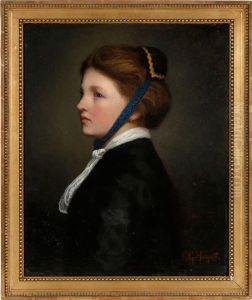Carl Gustaf Hellqvist Paintings
Carl Gustaf Hellqvist was a prominent Swedish painter born on December 15, 1851, in Kungsör, Sweden. He is best known for his historical paintings that vividly portrayed events from Scandinavian history, often with a romantic and nationalistic fervor that was characteristic of the 19th century. Hellqvist showed an early talent for art, and this led to his education at the Royal Swedish Academy of Arts in Stockholm, where he studied from 1869 to 1875.
After his education in Sweden, Hellqvist moved to Munich, Germany, which was a significant center for art studies and production at the time. He continued his studies at the Royal Academy of Fine Arts in Munich, where he was influenced by the detailed and dramatic style of history painting that was prevalent in German art circles. It was during this period that Hellqvist developed his meticulous approach to historical accuracy and detail, often conducting extensive research before executing his works.
Hellqvist's paintings were characterized by their elaborate compositions, with a particular focus on the interplay of light and shadow, and a narrative quality that brought historical scenes to life. His most famous works include 'Valdemar Atterdag holding Visby to ransom, 1361' (1882), which depicts the Danish king Valdemar IV collecting treasure from the citizens of Visby, and 'The Death of Sten Sture the Younger on the Ice of Lake Mälaren' (1880), which illustrates a key moment in Swedish history.
Despite his relatively short life, Hellqvist achieved significant success and recognition for his work. His paintings were exhibited in various European cities and received accolades, contributing to a surge in interest in historical and nationalistic art in Sweden. However, his career was cut short by illness, and he spent the last few years of his life struggling with health issues.
Carl Gustaf Hellqvist passed away on November 19, 1890, in Freiburg im Breisgau, Germany, at the age of 38. His legacy lives on in the canvases that continue to be appreciated for their historical value and artistic merit. Hellqvist's works remain significant in the canon of Swedish art, and his paintings are still displayed in museums and collections in Sweden and abroad.
